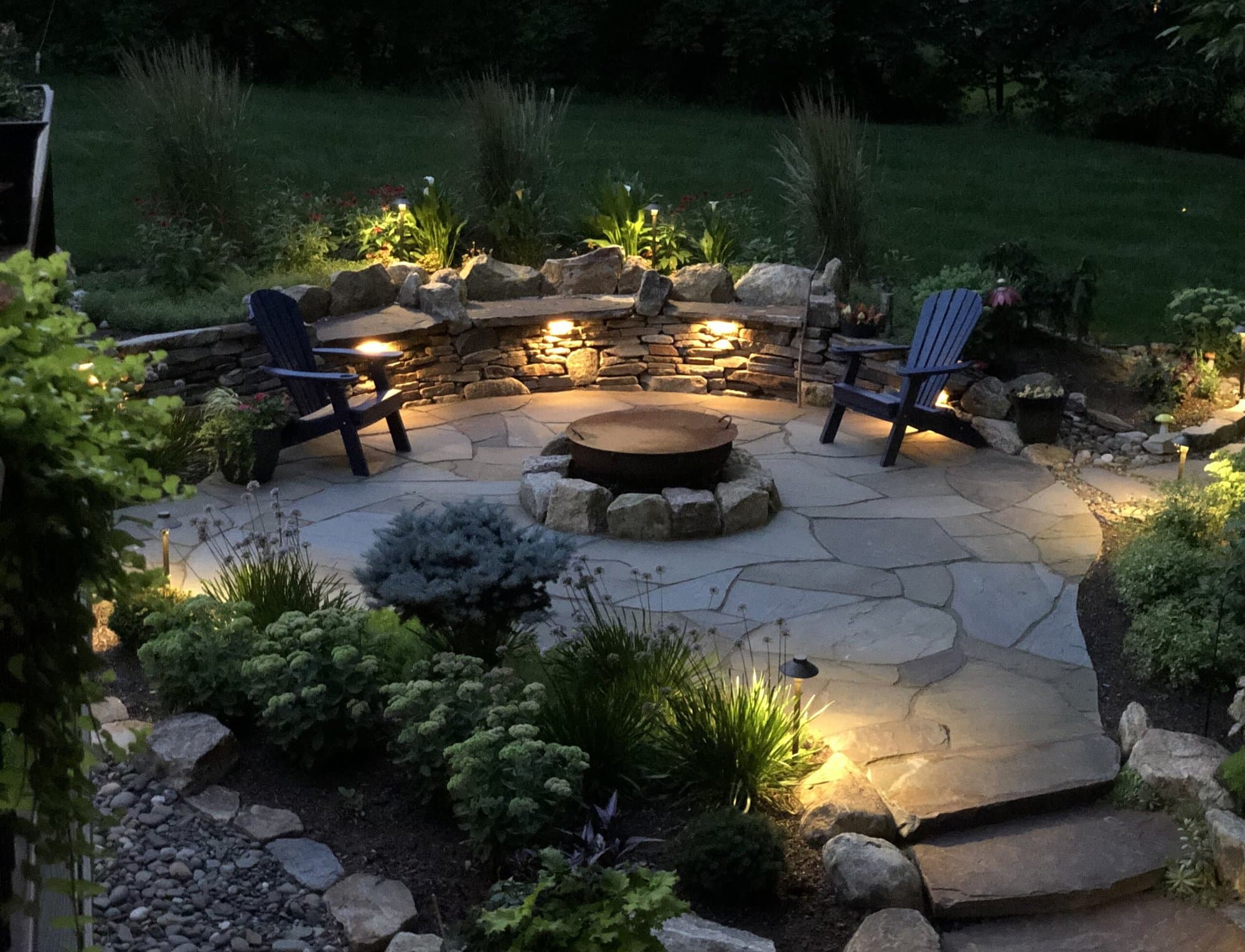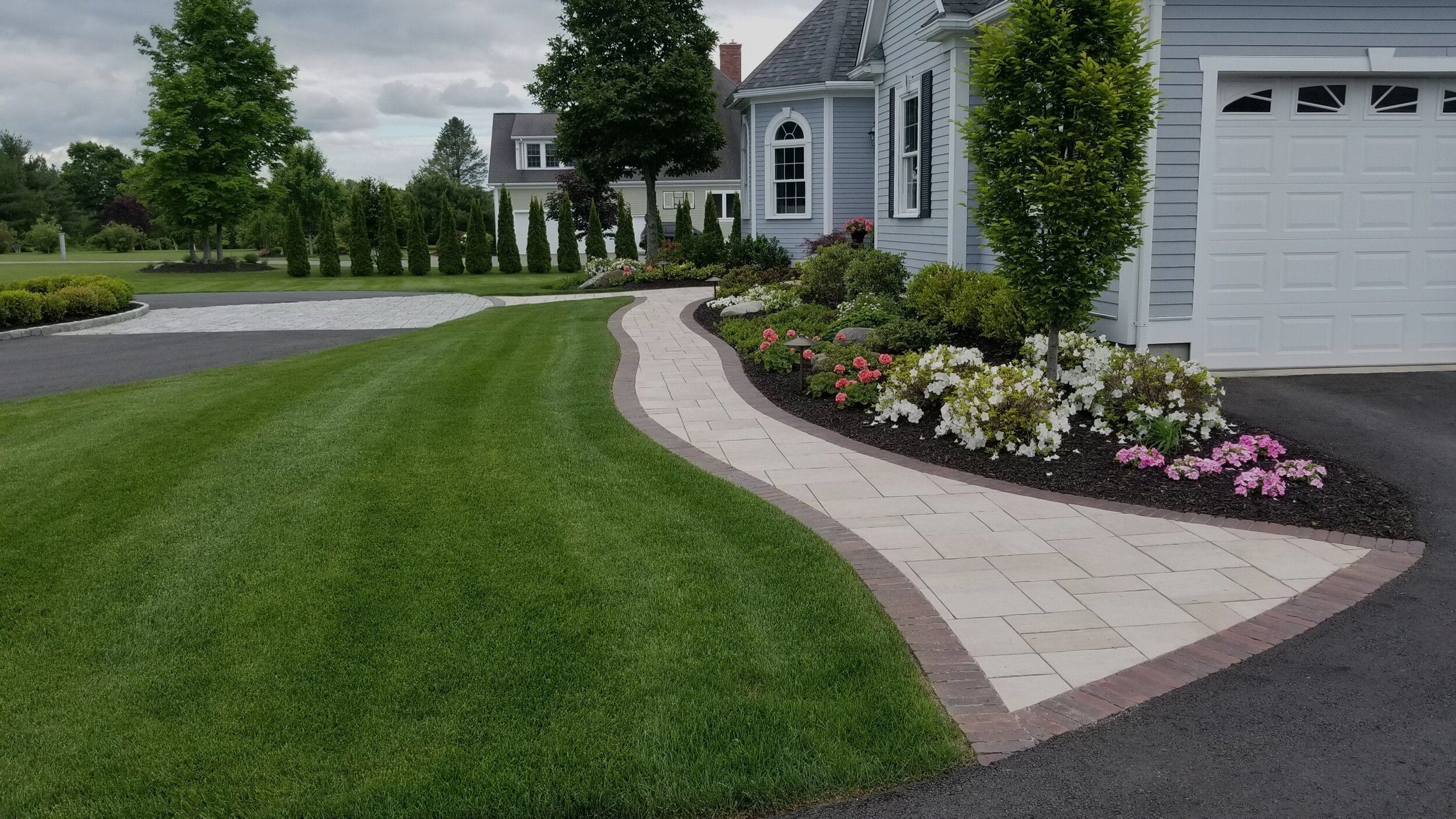Exactly How Palm Desert Landscaping Can Raise Your Home's Curb Allure
A Comprehensive Guide to Creating and Implementing Effective Landscape Design Solutions
The art and science of landscape design extend past plain appearances; they entail a thoughtful integration of design concepts, ecological stewardship, and sensible application. What approaches can one employ to make certain these landscapes not only thrive however also grow in consistency with their environments?

Comprehending Landscape Design Concepts
One may wonder what foundational components add to effective landscape style. At its core, successful landscape design depends upon numerous essential principles that lead the arrangement and selection of aspects within an area. These principles include unity, rhythm, equilibrium, and percentage, each serving to produce an unified outside atmosphere.
Unity refers to the natural relationship among various elements, guaranteeing that they interact aesthetically and functionally. Balance can be attained via unbalanced or balanced setups, allowing the landscape to really feel stable and inviting. Percentage entails understanding the range of aspects in regard to each various other and the surrounding setting, advertising visual consistency and comfort.

Evaluating Your Outdoor Area
Before executing the principles of landscape style, a complete assessment of your outside area is essential. This first evaluation helps define the extent of your landscape design task and makes certain that your style straightens with the distinct characteristics of your residential or commercial property. Begin by assessing the dimensions of your space, taking accurate dimensions to recognize the readily available location for various elements such as paths, gardens, and patio areas.
Next, observe the existing features of your landscape, consisting of topography, soil quality, and water drainage patterns. These factors considerably affect plant choice and positioning. Furthermore, evaluate the sunshine direct exposure throughout different areas throughout the day, as this will certainly affect the sorts of plants that flourish in your garden.
Think about the microclimates produced by structures, trees, and other barriers, as they can impact temperature and wetness degrees. Take note of any kind of existing plants or hardscape aspects that you want to get rid of or maintain. This detailed assessment prepares for a reliable and educated landscaping option, making sure that your design is not only cosmetically pleasing yet lasting and likewise functional for years to come.
Sustainable Landscape Design Strategies
Incorporating sustainable landscaping methods is important for creating an eco accountable exterior space. These practices not only advertise eco-friendly balance but additionally improve the useful and aesthetic value of a landscape. One foundational method is the utilization of indigenous plants, which call for less water and upkeep while sustaining regional wild animals. Implementing reliable watering systems, such as drip watering, reduces water waste and guarantees that plants get appropriate dampness.

Another efficient technique is the tactical positioning of trees and bushes to offer all-natural windbreaks and shade, hence decreasing energy costs (Palm Desert Landscaping). Rain yards can be incorporated into the landscape design to manage stormwater overflow properly, filtering contaminants before they get in rivers
Picking the Right Plants
Picking the right plants for your landscape is crucial to attaining both visual appeal and eco-friendly harmony. The process begins with an understanding of your regional climate, soil problems, and the specific microenvironments within your landscape. Analyzing factors such as sunlight exposure, dampness levels, and existing plants Bonuses will assist you pick plants that grow in your special setup.
Consider integrating native plants, as they are well-adapted to neighborhood conditions, call for much less maintenance, and assistance neighborhood wildlife. Furthermore, choosing a varied variety of species can enhance biodiversity while decreasing the threat of disease and parasite break outs. It is important to assess the development routines, blooming durations, and seasonal colors of possible plants to develop a cohesive and dynamic company website landscape.
In addition, think of the intended use the area; for instance, if the location will experience high foot website traffic, select resistant ground covers. By thoughtfully choosing plants that line up with both your environmental requirements and visual goals, you can produce a lasting landscape that not only improves your building but additionally contributes favorably to the surrounding environment.

Execution and Maintenance Methods
When the best plants have actually been selected for your landscape, the focus shifts to efficient implementation and recurring upkeep techniques. Effective setup starts with proper website preparation, which consists of dirt screening to determine nutrient levels and pH, followed by modifying the soil as needed. Thoroughly arrange plants according to their development routines and light needs, ensuring adequate spacing to promote healthy and balanced growth.
Irrigation is a critical component of implementation. Develop a watering timetable that takes into consideration try this site the particular requirements of each plant species, changing for seasonal adjustments. Utilizing drip irrigation systems can boost water effectiveness and decrease overflow.
Upkeep methods need to be carried out to make certain the durability and vitality of your landscape. Normal jobs include weeding, mulching, and pruning to regulate growth and prevent condition. Fertilizing should be conducted based upon soil tests, providing the necessary nutrients without over-fertilizing.
Keeping track of for conditions and insects is necessary; early detection can stop significant damage. Lastly, seasonal modifications to upkeep regimens, such as winterizing perennials and preparing for springtime development, will certainly guarantee that your landscape stays visually appealing and healthy and balanced year-round.
Final Thought
Successful application and recurring maintenance further make sure the durability and vitality of landscapes. By incorporating these elements, landscapes can be transformed right into beautiful, useful environments that promote biodiversity and contribute positively to area well-being.
One may question what fundamental elements add to effective landscape design. At its core, effective landscape layout hinges on a number of crucial principles that lead the arrangement and option of components within a room.Picking the right plants for your landscape is vital to attaining both visual allure and ecological harmony. It is necessary to examine the growth routines, blooming periods, and seasonal shades of potential plants to create a natural and vibrant landscape.
When the ideal plants have actually been picked for your landscape, the focus moves to effective application and recurring maintenance strategies.